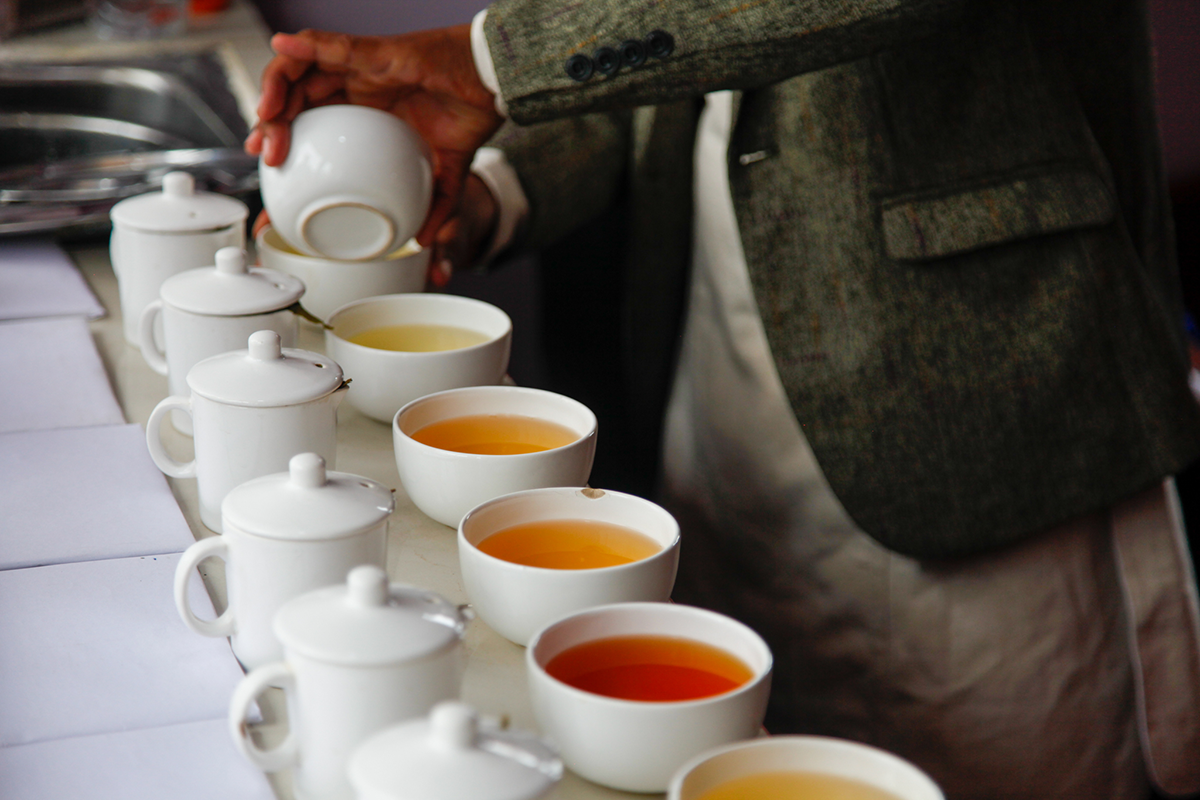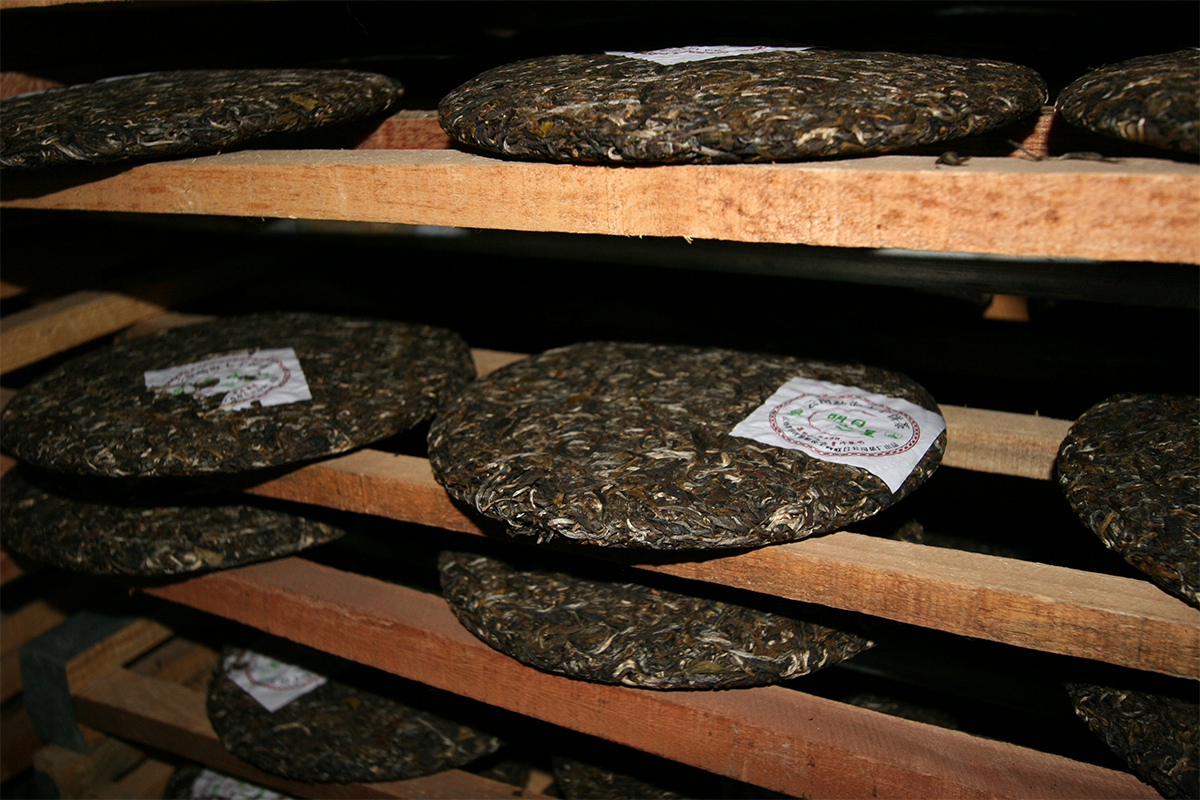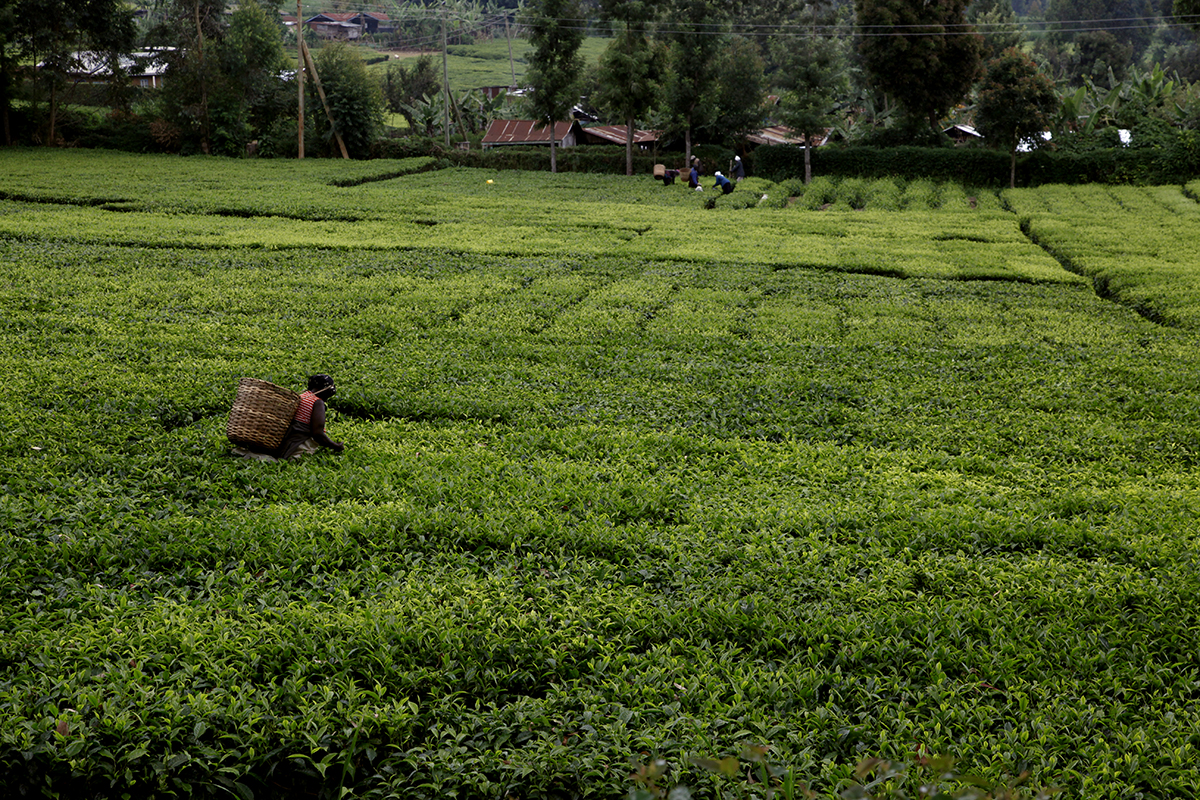There used to be fourteen tea plantations in the Azores; today only two remain. Gorreana is an institution and tourists flock to the factory gates. Everything is original, and it’s not often that a European gets to see the various stages of tea production at first hand. Not far from there, Porto Formosa also welcomes tourists and, as is often the case in the Azores, offers a superb view of the ocean. These old factories mainly produce black tea, but also some green tea. The leaves are harvested by machine. As for the quality of the teas, let’s just say that they are very popular with visitors, who can relive their amazing vacation on this beautiful archipelago every time they brew a cup.
Tea processing
Different practices
You might think that the rules that define the colour of a tea are strict, but this isn’t always the case. Here in the Golden Triangle, the fashion is for Mao Cha, the tea that serves as a base for the various fermented teas known in this part of the world as Pu Erh. Some people let the Mao Cha wither overnight before fixing it with heat, rolling it, then leaving it in the sun for a day. Others, as soon as the leaves are picked, fire them in a wok for about ten minutes before rolling them by hand and leaving them to dry for five to six hours in the sun.
Dara’s maocha
Travelling is about meeting people. Last week, I was very happy to meet Dara in the mountains of northern Thailand. Dara’s father, whose family comes from Yunnan (China), fled Kunming at the age of 15 accompanied by his younger brother, and came to the city of Pai. That was in 1938. He was escaping misery. He knew about tea. He felt the right feng shui in Fang and settled there. Dara is passionate about tea and makes a delicious maocha from leaves picked from old tea plants. Here, she’s posing with Mie, her friend with whom she shares her life.
The Darjeeling marathon
Every year, we tea sommeliers are subjected to a marathon: the Darjeeling spring harvests. Samples of new-season teas from the region arrive in bags of ten, twenty or thirty. You must taste them within half a day if you want to be in with a chance of getting hold of the tea. The sooner you buy, the more expensive it is, but the longer you wait, the more you run the risk of missing out on the teas you want. This process, which only takes place for Darjeeling because sales go to the highest bidder and batches don’t exceed a few dozen kilos, lasts about six weeks. By the end, the entire spring production has been sold and the tea bushes, distressed by three consecutive harvests, take a rest before resuming their growth. An observation at this point: every year, these teas are worth more and more. Yet all the gardens in Darjeeling claim to be losing money due to rising production costs, and the increases don’t appear to benefit the pickers. The Mckinsey audits, which were so maligned on the eve of the election, would be invaluable in shedding light on this mystery.
Citrus notes
In Reggio Calabria in southern Italy, bergamot is harvested from November to February from trees that each produce between 80 and 120 kilos of fruit per year. This citrus fruit, widely used in perfumery, gives the famous Earl Grey tea its citrus notes. Bergamot is grown in all the valleys in the region (pictured here: San Carlo valley), which offer breathtaking views of the Ionian Sea or the Strait of Messina.
For all our friends who produce tea
When I ask Bente, who makes the best teas in Tanzania, how Palais des Thés helps her and her community, her answer comes loud and clear: “It pays our employees!”
Then she adds: “It provides stability for the plantation and for our employees… And it makes us proud, of course!”
She continues: “Thank you for your support, and thank you for helping us to make a name for ourselves in the world of tea. When you come with your team, you show me and everyone here that you believe in us and that we can depend on you!”
I wish Bente and all our friends who produce tea, as well as our customers and employees, very happy holidays!
€378,000 per kilo
I am often asked how much a tea can fetch. The answer can be found this week on the Sotheby’s auction site, which lists a lot of rare dark teas for sale, the oldest of which dates back to the early 20th century. When compressed into a cake and well preserved, dark tea has the reputation of improving with time. On the famous auction house’s website, one of them is estimated at no less than 900,000 Hong Kong dollars for a 270g cake, which is €378,148 per kilo. If you’re interested, you will have to add the shipping costs to that amount, and don’t delay, as the auction ends on 16th December.
The good news is that a tea of this quality can be brewed several times.
A taste for creativity
Tea is steeped in tradition, for sure, but innovation is not forbidden. In Tanzania, Bente, who had the audacity to plant tea trees on a coffee plantation, cultivates a taste for creativity. Sometimes she hollows out papayas and fills them with tea so that the camellia leaves take on their aroma when they come into contact with the fruit. At other times, she blows hot air onto sliced bananas, infusing the tea with a new fragrance. And she does everything in the most artisanal way possible. Bravo Bente!
Roll out the green carpet
It takes a lot of attention to detail to produce fine tea, harvested from this beautiful emerald expanse. Only the bud and the first two youngest leaves at the tip of the shoot must be picked. The subsequent stages in production also play an important role in quality. Let’s roll out the green carpet for everyone who helps to create such delicious teas.
Alex cultivates curiosity
By the time you read this, I’ll be with my friend Alex, tasting each of his teas. His Satemwa plantation in Malawi is one of the best in Africa. Not content with making tea for industrial producers, Alex set up different workshops to enable him to experiment – with success. He’s tried all types of processing methods to make semi-oxidised, green, white, fermented, smoked and sculpted teas. Curiosity doesn’t kill the cat; on the contrary, it helps us progress, and Alex is a brilliant example.



